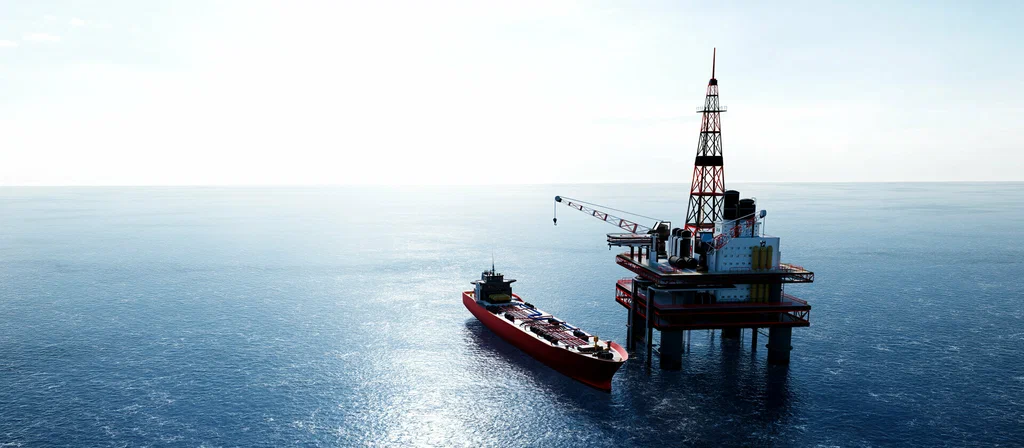Exploration around the world is the spectacle of science, engineering, and human bravery. Deep offshore energy extraction means activities piloted in deep water, which is radically deeper than 500 meters.
These activities are conducted with the help of technological advancements in engineering to find, obtain, and manage resources such as oil and gas.
Deep Sea Oil Exploration – Overview
Deep-sea oil exploration, also known as fossil fuel exploration, requires technological advancements and human skills to reach the deepest floors of the oceans and extract oil. Engineers and divers sometimes reach hundreds of meters to thousands of meters to explore oil reserves.
However, it requires highly dedicated equipment and skills to withstand ruthless and unforgiving deep-water pressure, unsympathetic conditions, and isolated locations. Such highly risky exploration results in vast oil reserves.
Risk, Cost, and Concerns – Deep-sea Oil Exploration
Deep oil exploration is a costly process in which humans and machines must endure extreme pressure conditions.
They risk everything to reach oil reserves and pose serious environmental threats, which have created deep concern for the marine ecosystem. One major concern is oil spills, which harm sea creatures and their habitat. It also raised deep concerns about permanent species loss and seabed harm for thousands of years.
However, concerns for those who are dependent on the health of these species also rose. Deep oil extraction, which has benefited us, also poses great threats to species underwater and over water, and the whistle to protect has been blown.
Renewable Offshore Energy Extraction
It is the primary reason for advancements in deep offshore drilling technology. As the reserves on the mainland are depleting, searchers turned to the deepest waters to find more energy reservoirs.
The scientists did not stop extracting oil and gas reserves under deep waters but also applied science and engineering to harness the ocean’s power to obtain offshore energy extraction.
This gave them ocean wind power, and they created offshore wind farms to generate energy. The ocean’s greatest advantages are its strong currents and winds.
Benefits of Offshore Wind Energy
Some of the considerable benefits include the following:
- The ocean contains consistently high wind speeds and regularly flows in one direction. This means that fewer windmill installations are required to produce anticipated electricity, which is cost-effective.
- Oceans also provide large spaces to build offshore windmills, which means engineers can produce a large amount of electricity in a larger ocean space, a clean and sustainable energy resource.
- Offshore energy extraction has a lesser environmental impact, a hot issue that triggers many concerns. Furthermore, access to these waters is minimal, protecting the marine ecosystem.
Offshore Drilling Technology – Reason for Deep Exploration
Offshore drilling technology is the primary reason for all deep explorations. The major goal is to explore, extract, and control reserves under oceans by using engineering and technological advancements.
The significant aspect of offshore drilling technology is its ability to endure deep water pressure and extreme conditions.
Benefits of Technology in Drilling
Offshore drilling technology made exploration possible. This technology includes rigs and mobile platforms balanced on legs and lowered to shallow ocean beds.
For deeper waters, floating vessels are designed to maintain balance through resilience with submerged buoys. Specially designed and equipped ships also provide mobility in the ocean spaces.
To maintain their positioning in deep and distant waters, they use dynamic positioning systems.
Advancements in Drilling Technology
Technology in drilling has brought different drilling systems, such as rotary drilling rigs, directional drilling, and managed pressure drilling.
Rotary drilling rigs help in exploring oil and gas and are able to drill through various geologically challenging reserves.
Oil extracting companies worldwide use directional drilling or boring methods. Most oil wells are positioned right above the oil reserve, which leads to vertical drilling.
A managed pressure drilling method involves fracture formation pressures, pore pressures, and bottom hole pressures balanced at the surface.
In challenging and changing formations, it precisely controls boring pressures to increase safety and efficiency in oil exploration.
Final Thoughts
Innovation in deep-sea exploration is the reason for exploring the grave depths of the ocean to extract oil and gas reserves that could generate wealth and resources for human beings.
Similarly, offshore windmills are also part of ocean-based sustainable electricity generation but are better in cost and have reduced environmental concerns.
